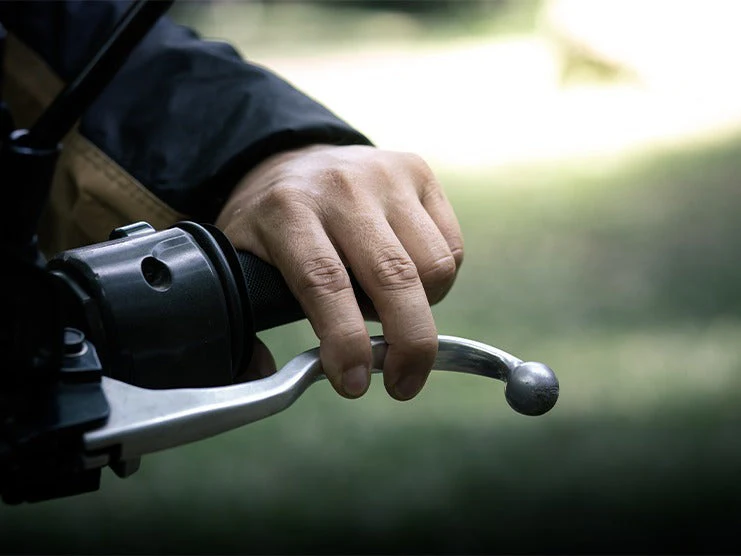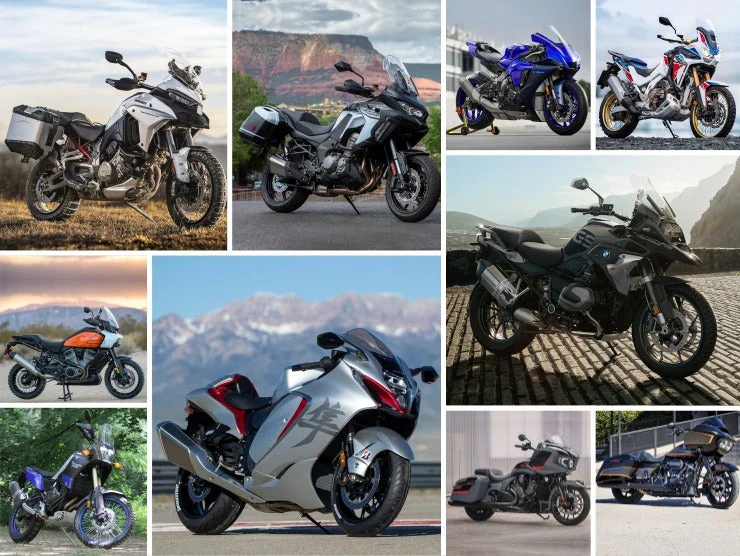Riding a motorcycle isn’t like riding other vehicles; you must constantly learn and practice riding skills to ensure safer riding. Many motorcycle enthusiasts who want to start riding need to know how to practice riding and safe places to practice before they start riding on public roads and highways.
This article discusses tips and places where you can safely practice riding a motorcycle.
Table of Content

1. Where to Practice Riding a Motorcycle
1.1 Big Box Parking Lots
Big box parking lots are safe places for new riders to practice riding as there is plenty of room to maneuver with minimal obstructions and other vehicles are usually moving slowly. Big box parking lots do not require fees and riders can practice as long as they like as long as it does not impede other vehicles looking for parking.
1.2 Private Properties
If you’ve just purchased your first motorbike, a safe place to practice riding is private property. However, you'll need the property owner's consent to be allowed to ride your motorbike around their property.
1.3 Surrounding Areas
The surrounding areas are ideal places to practice riding a motorcycle since there is little traffic. You can concentrate on learning how to ride a motorcycle without having to worry about traffic signals.
1.4 Off-Road Parks
Off-road parks provide you with an opportunity to practice riding without worrying about other vehicles. These parks are specifically used for riding practice. Make sure to wear a helmet for eye protection while riding in an off-road park.
1.5 Rider Program Locations
In almost every town and city, there are locations that offer rider programs. Most newer riders usually learn how to ride safely in a rider training course before buying his/her first bike.
Most classes will be frequently held in open spaces away from public roads. When learning to ride a bike in such a location, there’s no need to worry about security.
However, some programs require you to have suitable motorcycle gear, such as helmets.
1.6 Public Roads
Once you have a license and feel comfortable riding, you can start practicing on public roads. But make sure to follow all traffic laws and safety guidelines.
Where you choose to practice will depend on your skill level, experience, and local motorcycle laws. Be sure to always prioritize safety and wear appropriate riding gear.
2. How to Practice Riding a Motorcycle
2.1 Know All the Motorcycle Controls and Symbols
Without knowing motorcycle controls and symbols, you won’t get very far on your motorcycle. It's recommended you check your owner’s manual for information on the controls, symbols, and other features.
Some basic motorcycle controls are listed below:
- Handlebars: Located at the front of the motorcycle and help with steering.
- Throttle: Located on the right handlebar and controls the motorcycle’s speed.
- Front Brake Lever: Located on the right handlebar in front of the throttle and used to stop the front wheel.
- Rear Brake Lever: Located by the right footrest and used to stop the rear wheel.
- Shift Lever: Located by the left footrest and used to change the transmission’s gears. To choose the desired gear, move the lever up or down with your foot.
- Clutch: Located on the left handlebar and helps you change gears. You must pull the clutch to change gears and squeeze the clutch to disengage it.
- Ignition Switch: Connected to the starter button and helps turn the ignition system on or off.
- Starter: Located on the right handlebar and starts the motorcycle after turning on the ignition.
2.2 Practice Accelerating
Make sure your bike is on dry and level ground before putting your bike in neutral and starting the engine. Allow the engine to run for a minute, pull the clutch in, shift down to first gear, and slowly release the clutch.
Do all this slowly to prevent the engine from stalling. If your engine is powerful enough, you can move forward without even touching the throttle. The purpose of this is to learn exactly when your bike will start to move forward.
If your engine stalls even when you release the clutch slowly, then apply a little throttle. You can apply a fixed amount of throttle between 10-20% output before releasing the clutch or apply throttle slowly at the same time you release the clutch.
Do not apply too much throttle as it can cause you to lose control over your bike. If you need to stop, simply release the throttle by pulling the clutch all the way in and gently press the front brake until you come to a stop.
The appropriate amount of throttle will depend entirely on your body weight and your motorcycle. Experiment with the throttle a few times until you have a better handle on how much throttle you need to accelerate your bike smoothly.
2.3 Practice Changing Gear
To practice gear shifting, you need to accelerate a bit faster and make sure there is enough space with the vehicle in front of you. However, avoid going faster than 15-30 kph. Once you reach this speed, release the throttle pull the clutch all the way in, and change to second gear.
Once in the second gear, apply the same throttle, release the clutch slowly, and shift into the third gear. Make sure to also practice downshifting along with upshifting.
2.4 Practice Emergency Braking
Try to make it a habit to use about 60% of the front brake and 40% of the rear brake while riding a motorcycle. Repeat this practice multiple times at different speeds. Start by reaching a speed of 30 kph. Slowly apply both the front and rear brakes.
Make sure to apply the brakes slowly; otherwise, you might cause the wheels to lock up. The weight will suddenly shift towards the front wheel due to inertia. More weight on the front wheel means it will be harder to press the front brake and may cause it to lock up. If your wheels suddenly lock up while riding, immediately release and apply the brake again.
Make sure to pull the clutch all the way in while braking; otherwise, the engine will continue delivering power to the transmission which may cause it to stall.
2.5 Practice Turning
Be cautious when turning. Turning too fast may cause you to slide off the road, and drift into another lane, or skid and lose control of your motorcycle. Make sure to reduce speed when approaching a turn and lean with your motorcycle in the direction you are turning.
Here’s how you can safely turn on your motorcycle:
- Reduce speed by easing off the throttle or braking.
- Try to look ahead around the corner while keeping your body in the same riding position.
- Lean with your motorcycle into the turn. If the turn is sharp, you will need to lean more at higher speeds. If it’s a slow turn, you only need to tilt your bike.
- While turning a corner, maintain a steady speed. As you come out of the turn, increase speed by pulling the throttle.
3. How to Practice Riding a Motorcycle with a Passenger?
Riding a motorcycle with a passenger requires more skills and knowledge than riding alone. It’s recommended you practice alone first before considering transporting a passenger.
Before riding with a passenger, you must master the following:
- Riding in Traffic
- Riding Uphill and Downhill
- Emergency Braking
- Countersteering
4. Tips for New Motorcycle Riders
- Familiarity with the Bike: There are different types of motorcycles out there, from supercharged sport motorcycles to touring bikes. Do your research and buy the type of motorcycle best suited for you.
- Master the Clutch: For most motorcycles, operating the clutch can be tricky. Try a bike with a dual-clutch transmission as these are automatic transmissions that allow you to change gears easily with buttons.
- Refine Your Body Position: Always be mindful of where and how you sit on your bike. Make sure to have a good grip on the handlebars, relax your arms, press your knees around the fuel tank, and keep your body shifted toward the front of the seat.
- Cornering: Most riders are fine when they are going in a straight line, but may become nervous approaching curves. To improve your cornering skills, find a nice two-lane road to practice on.
- Practice: Practice is the best way to learn. You need to practice constantly until you master the riding skills.
5. Last Words
To make riding a motorcycle second nature, you need to practice repeatedly. Finding a safe place to practice riding a motorcycle is crucial for rider safety. The ideal location is an area with little to no traffic, such as private properties, big box parking lots, off-road parks, surrounding areas, public roads, and rider program locations. Aside from a safe place, you need to hone your riding skills, including accelerating, changing gears, emergency braking, and turning. Viking Bags has many parts and luggage options, including sissy bars, fairings, crash bars, handlebars, sissy bar bags, and motorcycle saddlebags for a better motorcycle riding experience.













Leave a comment
All comments are moderated before being published.
This site is protected by hCaptcha and the hCaptcha Privacy Policy and Terms of Service apply.